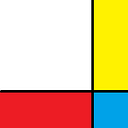Heaven or Hell?
时间:14世纪 — — 16世纪
中心:起源于意大利,而后扩展到西欧各国
背景:11世纪后,随着文化生活的发展,人们逐渐摆脱了对待生活的悲观态度,转而开始追求世俗乐趣,然而这与天主教的主张背道而驰。14世纪的意大利首先出现了一批反对天主教的神权地位及其虚伪主张的知识分子,但由于当时能够取代天主教地位的完整思想体系还未形成,这批知识分子便借用古希腊和古罗马时期的文化形式来表达自己的主张。
Since the 11th century, thanks to the spread of culture, people started to depart from sorrow and distress in middle age and started to appreciate the fun and joy from life. But the conservative and Catholic didn’t follow. In the 14th century, a group of Italian from this cultural movement stood out and criticized Catholic theocratic status and its hypocritical claims. They had to borrow the culture and expressions from ancient Greek and Roman instead of challenging Catholic — the ideological system was still too huge to overthrow.
导火索:1347年黑死病在医疗条件较为落后的的欧洲横行肆虐,短短四年的时间内就导致了近2500万人(约占欧洲1/3–1/2的人口)死亡。天主教会无法解释这样的情况,称此为“天谴”,让百姓通过祈祷、忏悔来寻求庇护。然而人们很快就发现“祈祷、忏悔”并不能保护他们,不由得对神权产生了质疑。在这样的背景下,乔万尼·薄伽丘一本批判天主教之黑暗、赞扬人之高贵,充满人文主义的《十日谈》应运而生,正式掀开了文艺复兴的序幕。
The catalyst: In 1347, the Black Death raged in Europe with undeveloped medical treatment. In just four years, nearly 25 million people (about 1/3–1/2 of the Europen population) died. The Catholic Church was unable to explain the cause, attributing it a “condemnation”, allowing people to seek asylum through prayer and remorse. However, people soon discovered that “prayer and remorse” could not protect them, and could not help but question the righteousness of God. Since then, Giovanni Boccaccio began criticizing the dark side of Catholicism and praised the nobility of human beings. Decameron, the novel raising humanity came into the ground and led to the Renaissance.
说起文艺复兴,大家都会想起文艺复兴三杰:
Speaking of the Renaissance, everyone will think of the Three Figures
但文艺复兴时期的优秀艺术家还有很多,让我们来了解一下吧!
But there are still many great artists from the Renaissance, let’s find out together!
早期文艺复兴
Early Renaissance
洛伦佐幼时从师于巴尔托洛·迪·米凯莱(Bartolo di Michele),在他的教导下学习金饰技术。但他并不将自己的才能局限于金饰,反而敢于尝试各种形式的艺术,如雕塑、绘画等。1401年他因赢得了佛罗伦萨圣若望洗礼堂青铜大门的竞赛而一举出名,之后他接受了教堂雕制各门的委托,创造了多件作品,其中包括米开朗基罗所说的“天堂之门”。
Lorenzo studied under Bartolo di Michele as a child and learned the technique of gold jewelry under his teaching. But instead of confining his talents to gold jewelry, he tried various forms of art, such as sculpture and painting. In 1401 he became famous for winning the bronze gate of the Baptistery of Saint John of Florence, after which he accepted the commission to carve the doors of the church and created a number of works, including what Michelangelo called Porta del Paradiso.
注解:天堂之门,镀金铜门,洛伦佐·吉贝尔蒂,1425–52,复制品位于佛罗伦萨圣若望洗礼堂东侧,原品保存于主教座堂博物馆(Museo dell’Opera del Duomo)
天堂之门是洛伦佐为教堂制作的第二套青铜门。大门的每个翼都包含五个大型矩形场景浮雕。浮雕描绘了圣经旧约中的十个场景:亚当和夏娃,该隐和亚伯,挪亚,亚伯拉罕,以撒、以扫和雅各,约瑟,摩西,约书亚,大卫,索罗门和示巴女王。
天堂之门描绘的故事仍是宗教故事,但表现的手法却完全不同。最突出的特点在于,他利用透视的手段来体现人物的相对位置和空间的深度 — — 近处的人物较大,远处人物较小,直至融入背景之中,带来了很强的景深感。此外,他十分注重对细节的描绘,利用高低凸起细腻地塑造了一个个人物形象。最后,金子的使用,也让浮雕变得夺目。
Note: Porta del Paradiso, Gilded Copper Door, Lorenzo Ghiberti, 1425–52, the replica is located on the east side of the Baptistery of Saint John of Florence, the original is preserved in the Museo dell’Opera del Duomo.
The Gate of Heaven is Lorenzo’s second set of bronze doors for the church. Each wing of the gate contains five large rectangular scene reliefs. The relief depicts ten scenes in the Old Testament of the Bible: Adam and Eve, Cain and Abel, Noah, Abraham, Isaac, Esau and Jacob, Joseph, Moses, Joshua, David, Solo Gate, and Queen Sheba.
The story portrayed by the gate of heaven is still a religious story, but the way of expression is completely different. The most prominent feature is that he uses perspective to reflect the relative position of the characters and the depth of the space-the characters near are larger and the characters far away are smaller, until they are integrated into the background, bringing a strong depth of field sense. In addition, he pays great attention to the description of details and uses a high and low protrusion to delicately shape a personal image. Finally, the use of gold also makes relief eye-catching.
地狱之门,奥古斯特·罗丹,墨西哥索马亚博物馆
1880年罗丹受委托为法国工艺美术馆青铜大门做装饰雕刻。他在构思这件作品时想到了洛伦佐为佛罗伦萨洗礼堂所做的“天堂之门”,而后他决定以但丁《神曲 地狱篇》为主题创作“地狱之门”。他为《地狱之门》创作了数不清的雕像,包括《三个影子》、《思考者》、《吻》等多件作品。
In 1880 Rodin was commissioned to do decorative carvings for the bronze gate of the French Museum of Crafts. When he conceived this work, he thought of Lorenzo’s “Gate of Heaven” for the Baptistery of Florence, and then he decided to create The Gated of Hell based on Dante’s “Divine Comedy Hell”. He has created countless statues for The Gated of Hell, including “Three Shadows”, “Thinker”, “Kiss” and many other works.
